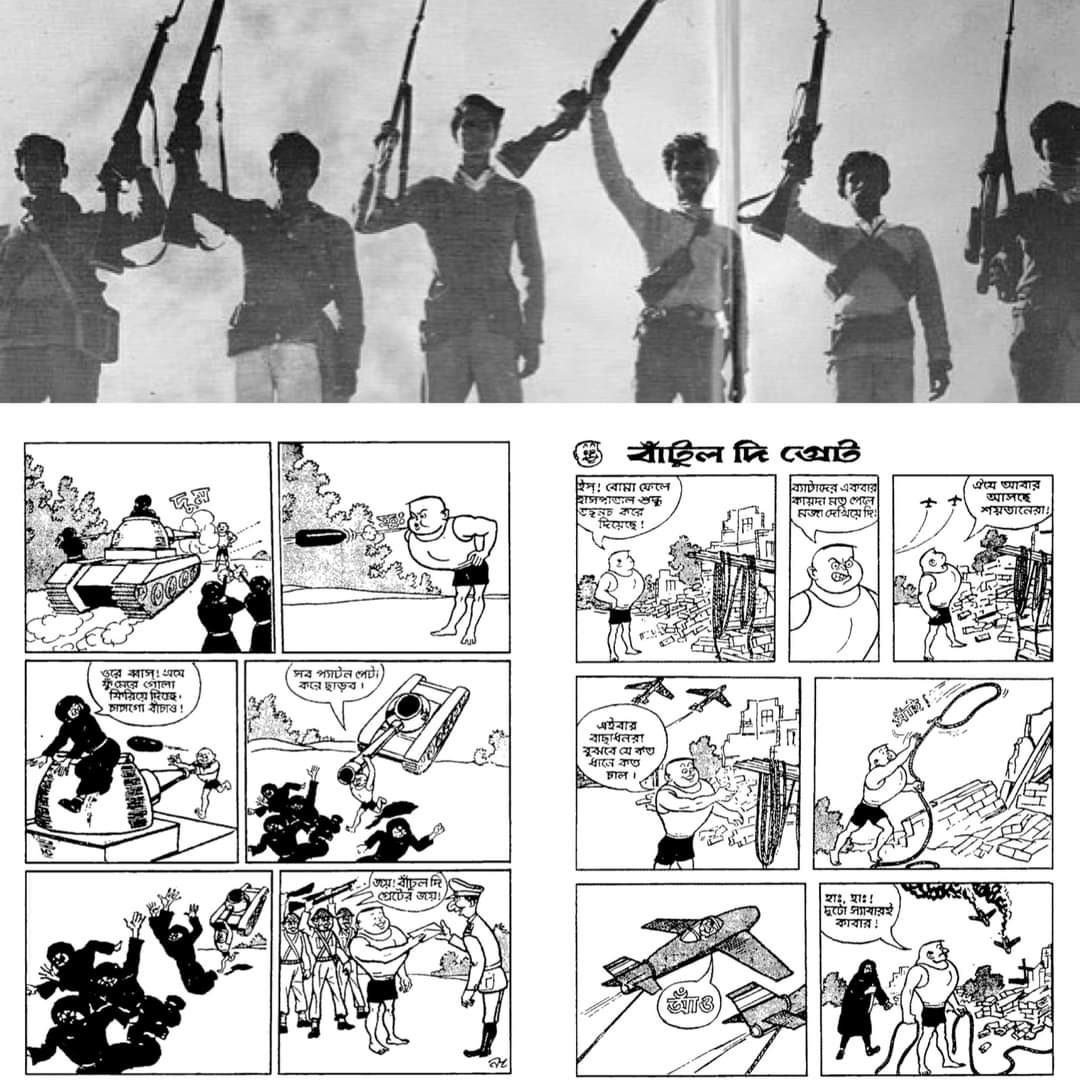
For any Bengali, this is a very familiar image (PC Zee5) - Bantul the Great, one of the immortal creations of legendary comic artist Narayan Debnath. Bantul, who remains as popular even today, has an interesting connect to #BangladeshLiberationWar (1/3) 

The origin roots back to 1965 during the Indo-Pak war when the Narayan Debnath, inspired by the editor of Deb Sahitya Kuteer - Kshirod Babu, started portraying the character as a Superman-like patriotic individual found assisting Indian soldiers (2/3)
This took a whole new dimension during the 1971 Bangladesh Liberation as Bantul became a symbol of courage & resistance for the beleaguered Bengalis of East Pakistan. From a comic strip, Bantul became a socio-cultural phenomenon. Truly Great! (3/3) 

• • •
Missing some Tweet in this thread? You can try to
force a refresh










